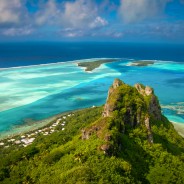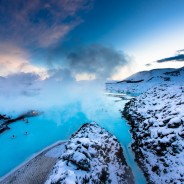Blog
When to go to Maldives
When to go to Maldives? Located in south-central Asia and extended miles from any nearby mainland, this chain of islands is filled with white-sand beaches and shores, luxurious resorts and all while being surrounded by the Indian Ocean teeming with an incredible marine life. With postcard perfect sceneries everywhere you look, it’s no wonder why Maldives is a highly sought out tourist location. The best time to go to Maldives depends on the reasons you want to go. The good news is you can go and experience this tropical paradise any time of the year, but there are better times to go. Read the information below and discover when to go to Maldives. When to go to Maldives based on Weather Though visitors can be found year-round in Maldives because of the tropical climate and constant warm weather, there are certain times that may be better depending on your holiday preferences. Monsoon Season: There are two specific times of the year that Maldives gets hit by monsoons: July-August and a longer stretch from November-March. Although it is difficult to tell when the monsoon will arrive seeing as it’s not typically an every day occurrence, it is best to just be aware that they are very likely to happen during a trip in these times. Summer: Seeing as Maldives falls below the southern hemisphere, the summer months are between December and April. This time is considered the dry time with very hot temperatures ranging from 86 to 92 degrees F (30-33 C). If you decide to visit during this time be sure to stay hydrated and avoid being in the sun for extended periods of time as it can easily cause burns and dehydration. Winter: May to November are considered the winter months where the temperatures decrease to around 77 degrees F on average (25 C). There is also chance of rainfall during this time but the weather is much more bearable than that of the summer season. When to go to Maldives based on Crowds High Season: December through April is considered the high season where you will see the most crowds, although it never actually seems to feel crowded at Maldives. Room rates and prices will increase during this time so be sure to plan very far in advanced on both airfare and accommodation if you decide to visit during high season. Low Season: From May to November, you will find much fewer people and much better deals on hotels and even the luxury resorts in Maldives. Although this is the time when rainfall does occur, this is considered to most people the best time to go. Best times to go to Maldives based on Activities Surfers: From April to June is widely considered the best time to surf in Maldives. During this time there’s bigger chances of both glassy waters and a consistent swell. If you happen to heading to Maldives in June then be sure to check out the O’Neill Deep Blue Open WQS contest where you will find surfers flying in from all over the world in hopes of going pro. Snorkeling & Scuba Diving: During the winter season from May to November is considered the best time for snorkeling and scuba diving. This is because of the increased water clarity and overall better visibility...
read moreWhen to go to Fraser Island
When to go to Fraser Island? As the largest sand island in the world and its fantastic location along the southern coast of Queensland, Australia it is one place where guaranteed fun, excitement and excellent weather are included in a visit here. Whether you are planning to camp, explore the rainforests or simply lay beachside in the sand you need to figure out the most ideal time for you to head over to this beautiful island. Fraser Island also has the distinction and recognition of being one of the Seven Natural Wonders of Oceania. As the largest sand island in the world and the collective options available for exploring nature, the island makes for a spectacular destination for nature lovers. Best time to go to Fraser Island based on Weather Because Fraser Island is located only 500 kilometers away from the Tropic of Capricorn, the climate consists of warm temperatures throughout the entire year. However, the average temperatures do vary depending on the season and it would be wise to take into account that because they fall below the southern hemisphere, chances are their seasons are opposite of those in your home country. Winter: The winter months are from May to August where the temperatures tend to range from 57-77 degrees F (14-25 C). These are the drier months of the year and it is less likely that you will see much rainfall if you decide to visit the island during this season. Summer: September through until about April the temperatures increase to around 73-86 degrees F (23-30 C). The most rainfall occurs between the months of January and March. If you are staying more inland then chances of more rainfall are much higher than that compared to staying more towards the coastline. It is important to be aware that because it is a subtropical climate on Fraser Island, occasional storms (sometimes severe) are always a possibility so be sure to stay up to date on current weather before heading to the island. When to go to Fraser Island based on Activities Fraser Island has a plethora of activities ready and available to all who come to visit. Depending on what you prefer to do on your holiday and the activities you are hoping to take part in, be sure to plan accordingly based on the best times throughout the year to go. Fishing: Between July and October is the absolute best time to head out to sea with the best chances great catch. The waters of Fraser Island are teeming with a variety of fish making this activity one of the top ones on the island for visitors to enjoy. Fishing tours are available to take you out where they have found July and August to be the prime fishing season based on what fish are found in the waters at that time. Whale Watching: There is a short window of time for whale watching and it occurs between the months of July through beginning of November. You can book a tour and head out to see the gentle giants of the sea up close and personal. If you’re lucky enough to be there at the right time, certain tours can take you out to Hervey Bay, the worlds whale watching capital where you can witness the countless...
read moreWhen to go to French Polynesia
When to go to French Polynesia? Composed of 118 scattered islands located in the French Republic of Tahiti and commonly referred to as an “overseas country”. Separated into five different island groups, French Polynesia has everything a tropical holiday should include such as pristine beaches, beautiful waterfalls and a plethora of museums, shopping malls and some fantastic festivals for all to enjoy and take part in. When to go to French Polynesia based on Weather Throughout the entire year, French Polynesia has a very warm and tropical climate where visitors can be found on any given time. However, some of the months do offer better weather than the others. November-April: Because of its location falling on the southern hemisphere, these are considered as the summer months. This is also known as the tropical rain season. Although temperatures are at their highest during this time, around 86 degrees F (30 C) there will be days of rainfall in between the intense sunny days. Because of the rain it also makes for a very high humidity level reaching sometimes to about 82%. May-October: This is the austral winter and is much drier than that of the summer season. Average day temperatures are at around 82 degrees F (28 C) while at night and early mornings drop to about 68 degrees F (20 C). Strong winds are also known to blow in from the southeast so make sure to pack proper windbreakers or jackets to keep from getting too chilly. When to go to French Polynesia based on Crowds Peak Season: The two months of July and August see the most tourists and crowds. Prices in hotels and accommodation are at their highest and it is advised that you book your plane tickets and hotel tickets as son as you can. August also is a time where many residents of French Polynesia leave the island in hopes to get away from the crowds so be sure to take into account that some shops and stores may in fact be closed during this time even with all of the high tourism. Low season: For a much better chance of getting discounted prices in accommodation, then plan to visit French Polynesia in the low season during the months of either April-June or September-November where the crowds are at their lowest and prices tend to drop dramatically. Plane tickets are also usually easier to come by and at a much more reasonable price than that of the high season. When to go to French Polynesia based on Events and Festivals Festivals and various events often bring more visitors who want to experience the local culture or participate in the excitement. Below is some of the events and festivals that draw people to French Polynesia. For some these are reasons to come and for others who want to experience smaller crowds or less congestion in the area these are reasons to look at alternative dates. Heiva Nui: Taking place in July, this is by far the biggest festival throughout French Polynesia. Lasting an entire month that is filled with constant parades, reenactments of ancient Polynesian ceremonies, dancing contests and plenty of delicious foods throughout. It’s extremely difficult to get a plane ticket or hotel reservation during this time so if you would like to experience this...
read moreWhen to go to Bora Bora
When to go to Bora Bora? A 6-mile long French Polynesian island containing two massive volcanic peaks, a serene lagoon and coral reef teeming with marine wildlife and of course a long list of happy travelers who have made Bora Bora their go-to vacation destination. Located just over 140 miles (230 kilometers) northwest of Tahiti makes this island a very tropical place perfect for both beach lovers and outdoor enthusiasts alike. Bora Bora is easily one of the best destinations for newly weds who truly want a special location for their honeymoon. When to go to Bora Bora based on the Weather Bora Bora has officially been said to have just two main seasons: summer and winter. Because it is located south of the equator, be sure to take into account that it most likely has the opposite season times of your home country. Summer: The summer months are December through March and are known as the wettest months of the year. Because of the rainfall, the humidity can become rather intense and sometimes uncomfortable if you are not used to that type of climate. Storms also occur quite frequently, which make the yearly rainfall amount sometimes up to 71 inches. Temperatures during the summer range from 70-85 degrees F (21-29 C). Winter: From beginning of April to end of November are considered the winter months and also the driest time of the year. Rainfall and storms are very rare during the winter and humidity is much more bearable for visitors. The average temperatures are usually 70-82 degrees F (21-27 C). Whether you decide to visit Bora Bora during the summer or the winter, be sure to pack accordingly with plenty of sunscreen and appropriate clothing. When to go to Bora Bora based on Crowds and Prices High Season: Because of the much more comfortable weather in the winter months of April-November, this is when tourism is at its peak in Bora Bora. The island itself is known as an extremely expensive tourist destination and if you want to guarantee both activities and accommodation options to be at their all-time highest, then high season is undoubtedly the time. The luxury hotels that are already quite expensive bump up their prices during these months. Crowds will also be much bigger and privacy at the lagoon and beaches will not be much of an option. Low Season: Summer is considered low season mostly because of the weather and storms that come along with it. The rainfall turns people off to wanting to visit during this time but luckily if you do plan on visiting Bora Bora during the winter, you will find a drop in prices for both accommodation and activities. Also, the crowds won’t be as bad compared to the summer months. When to go to Bora Bora for the activities Bora Bora, though small in its size and nature, has plenty of water activities readily available to any and all visitors. With such pristine turquoise waters filled with over 500 different marine species, Bora Bora is truly a paradise for ocean lovers. Snorkeling: During the day head out to practically any beach and within seconds you will find yourself surrounded by teem of colorful tropical fish. The best time to go during the day are simply whenever is simply...
read moreWhen to go to Uluru
When to go to Uluru? A colossal red rock also commonly known as Ayers Rock, stretches over a circumference of 5.8 miles (9.4 kilometers) and makes Uluru the largest monolith on earth. Located in the Australian Outback and over 200 miles away from the nearest city or town any visitor is advised to get fully prepared in their visit to this magnificent site. Visiting Uluru is an encounter with one of the Seven Natural Wonders of Oceania. It is one of the Australia nature attractions that leaves you wondering how in the world did this get here. It is a sacred place for locals and a wonder of nature for the rest of the world. When to go to Uluru based on weather In this region of Australia, the climate tends to see very hot and dry days with much colder nights. Some of the aboriginal people are known to believe that Uluru sees five separate seasons throughout the calendar year. Though this belief varies depending on the person, one certainty to take into account is that this land contains very extreme weather conditions. Reminder: Australia’s seasons are opposite to those of North America and Europe. December-February: Incomparably the hottest time of the year where temperatures can reach up into the low 100’s F (37 C). If you plan to visit during this time make sure to stay extremely well hydrated. May-July: These are the winter months where temperatures have a wide range of the lowest being 38 degrees F (3.5 C) and the highest at around 65 degrees F (18 C) during the day. Of course the nights will be the coldest so be sure to pack accordingly for all times of the day. August-November: Temperatures start to rise from the winter during these months making it a very comfortable time to visit Uluru. Also, during these months the landscape is known to provide breathtaking shifts of lighting to witness. Daytime temperatures range from the low 70’s to the low 90’s F (22-34 C) with nights being very cold. March to April: Although these months can see the most clouds and rainfall of any other months, chances are that you won’t see too much as the yearly rainfall is only about 1 foot per year. Temperatures range from the 50’s to the 80’s F (10-27 C). When to go to Uluru based on trekking Though trekking and hiking around Uluru either by yourself or in a group tour is considered OK, you should take into account that the people of Ulura strongly advise and ask visitors not to actually climb the rock. Because of its high elevation of 2,831 feet (863 meters) along with the extreme weather, there have been near to 35 deaths while climbing the rock. With that being said, the best time to trek and take in Uluru in all of its glory would be either sunrise or sunset. At both of these times visitors will find that the light tends to hit the rocks in the most serene ways that make it look as though the entire rock and desert is on fire. If you are wanting to capture Uluru at its most stunning, these would be best times to take out your camera and start snapping away. Once you’ve got plenty of pictures, set up a picnic and...
read moreWhen to go to the Great Barrier Reef
When to go to the Great Barrier Reef? One of the seven wonders of the natural world, the Great Barrier Reef is commonly seen on many travelers bucket lists as a must-see within their lifetime. With breathtaking picturesque beaches, a marine life that includes over 3000 separate reef systems, islands and activities available for all visitors to enjoy it is really no wonder why it has made it on so many people’s lists. The Great Barrier Reef is one of the world’s natural wonders that can be recognized from outer space. It is one of the largest living organisms in the world providing visitors with an incredible experience under the sea. This leaves many visitors wanting to know when is the best time to go to the Great Barrier Reef for an unforgettable experience with nature. Best time to visit the Great Barrier Reef The Great Barrier Reef is accessible year round, but there are times that are better and times that bring into question about a trip to this wonder of nature. The majority of visitors to the Great Barrier Reef are looking to snorkel or scuba dive. April and May are easily argued to be the best time to visit the Great Barrier Reef when considering the weather, clarity and the crowds altogether. When to go to the Great Barrier Reef based on Weather Although there can be visitors at the reef year-round, the seasons and weather does change quite a bit throughout the year. If you are somewhat particular about your weather conditions on holiday such as not wanting to get rained on, then here is some useful information that can help in deciding when the best time for you to go will be… June-October: Since Australia falls under the southern hemisphere, these months are the winter months and when temperatures are at their coldest. Although colder than the summer months, the temperature rarely drops to anything below 60 degrees F. The plus side to this season is that it is considered the driest of them all so chances of encountering rain are much slimmer. November-March: These are the summer months and when the rain sets in and the average temperatures begin to increase to about 85 degrees F. Because of the rain, expect a rather muggy climate that can be a bit uncomfortable at times. However, with plenty of hotels and accommodations nearby the reef, chances are you will have a nice air-conditioned place to escape from the humidity. April-May: Normal daytime temperatures between these two months are usually in the high 70’s F and sometimes reaching to the low 80’s with a much lower chance of rain than in the previous mentioned months. With these better and more comfortable weather conditions, many people believe this short window of time is the absolute time to see and explore the Great Barrier Reef When to go to the Great Barrier Reef for snorkeling or scuba diving Of course with the abundant marine life filling the waters of the Great Barrier Reef, almost every visitor plans on heading into the water to witness these magnificent creatures and wonders. There are certain times of the year when waters can be worse or even dangerous, however so it is best to know this following information before deciding when to go....
read moreWhen to go to Stockholm
When to go to Stockholm? One of the most visited countries in Scandinavia, tourists can be found in Stockholm year round. With famous Swedish cuisines, museums and islands to explore make Stockholm a unique and fun place to visit. Stockholm serves as a gateway to the country providing visitors with access to an amazing city along with the abundance of nature attractions found in the country. Visitors can even hope for an encounter with the Aurora Borealis, which is one of the Seven Natural Wonders of the World. When to go to Stockholm based on weather Although the many visitors rave about the friendly people and beauty of Stockholm, the only recurring complaint always seems to be the weather. Because of its location, the weather is influenced much by the Gulf Stream, which is why it becomes rather harsh at certain times of the year. Summer: Most people choose to visit Stockholm during the summer months of June through August where the weather is at its absolute best. With the most sunny days of the whole year and temperatures reaching to an average of 64 degrees F, visitors will truly get to enjoy being outside and taking in all that the city has to offer. Spring and Fall: One of the best things about visiting Stockholm during the spring or fall is being able to witness the beautiful flowers that are in full bloom. Some would say that these two seasons are even more glorious than the sunny summer months. The only problem is the high chance of rain during your stay in the spring or fall. Winter: Starting as early as October, the winter season sets in and everyone gets bundled up for the next five months or so. If visiting during this time, be sure to pack accordingly and know that temperatures can decrease to an average of 26 degrees F. Rain is almost guaranteed so be sure to also grab an umbrella while you are there! When to go to Stockholm based on seasons High season: It’s no surprise that Stockholm’s high or peak season is in the summer. Because of this, flights into the city tend to be considerably more expensive as well as accommodation prices. Along with great weather, a lot of cafes and attractions are opened up ready and welcoming all visitors to enjoy, unlike the off-season. Festivals and events are more common during the peak season, which offer visitors an exciting and fun alternative to just sightseeing. Low season: With the sometimes unbearable winter months, it should come of no shock that this is the low season for the city. Although with strings of Christmas lights and markets throughout, the high tourist numbers tend to drop substantially. However, if you do find yourself in Stockholm during this time, there are numerous dance, ballet and theaters open that offer the perfect escape from the cold weather. Best time to go to Stockholm for Festivals and Events The best times to go to Stockholm based on festivals and events depends on your interest. For some large festivals are reasons not to go in order to avoid the crowds. For others, it is the time to engage in the festivities and the whole reason to go. Below are some events and festivals that you may want...
read moreWhen to go to Rome
When to go to Rome? With ancient monuments and historical buildings filling the city known as “The Eternal City”, it’s no wonder why it will always serve as a constant reminder why Rome was one of the greatest centers of Western civilization. From beaches, cafes offering delicious Italian cuisine to museums and incredible ruins of the famous Colosseum, the city of Rome has something to offer every visitor. Rome is also an excellent city to base your Italy travels or as one of your Mediterranean cruise’s ports of call. When to go to Rome based on Weather and Crowds Rome, being one of the most popular cities to visit in Europe, visitors can be found there on any given day or month of the year. However, there are is some certain weather that people prefer to be accompanied by while walking the beautiful cobblestone streets of the city. Here is a breakdown based on the four seasons: Winter: Being by far the coldest time of the year in the months of December through the end of February you will find temperatures ranging anywhere from the mid 30’s to low 50’s Fahrenheit. With that being said, this is the probably the best time to go because the city seems to be significantly less crowded along with room rates decreasing sometimes to half the price in high season. As long as you are bundled up with the appropriate clothes, expect very few lines for any attractions. Spring: With much warmer temperatures from April to May sometimes up to the mid 70’s it is a lot more bearable compared to the winter months. Crowds do tend to increase more here so don’t expect the best hotel deals but it won’t be any sort of problem when it comes to at least finding a room. Summer: Rome can get very hot and humid in the summer from June to August. This is peak season and it requires usually up to six months in advance when booking a room. Temperatures will be in the upper 80’s so make sure to pack wisely in accordance to this. Fall: The crowds begin to become fewer and fewer and temperatures start to decrease to a more comfortable temperature like that of spring season. You will find smaller lines at attractions and possibly a decrease in room prices. When to go to Rome based on Festivals and Events Holy Week & Easter Sunday: The week leading up to Easter Sunday you will find processions and age-old ceremonies being held for Holy Week. Four days before Easter is when the most notable procession takes place; the pope passes the Colosseum and the Roman Forum making his way up to Palatine Hill where a torch-lit parade brings an end to the observance. Keep in mind that this is a busy week for the city and groups from neighboring countries will most likely come to celebrate as well so make sure you have your trip and accommodation planned out well in advance. Festa di Noantri, Trastevere: Taking place in July, you are able to see one of Rome’s most colorful neighborhoods transform into one humongous outdoor restaurant. You can find tables lining the streets and musicians entertaining all guests coming to enjoy the delicious cuisines. It may be a bear to...
read moreWhen to go to Prague
When to go to Prague? Many consider Prague as one of their favorite places to visit in all of Europe. Walking around by foot or even taking a guided tour you can find beautiful churches and cathedrals, the famous Charles Bridge and of course some unique and tasty beers after a long day of sightseeing. Prague is a must-see when it comes to top European countries to visit and its no surprise as to why. The spring time is a favorite for many visitors, but rat assured Prague is a destination year round. Read on and discover when the crowds visit Prague. When to go to Prague based on Weather The city of Prague is one of those places where weather is rather hard to predict. They have four seasons but all can be vary depending on the year, month or even day! Although you never really know what you are going to get, there are certain times of the year that you are most likely to see these following weather patterns… Winter: This rather cold, rainy and sometimes snowy season can last sometimes from December all the way until early May. Make sure you pack an umbrella and a couple warm jackets if you plan on visiting during these months. Spring: This is often referred to as having the best weather throughout the year. Not only will you see temperatures most likely in the 70’s but you will also be able to see trees and flowers in full bloom! If you are traveling this time of the year you are in for a real treat as it is perfect walking weather and the best time to capture some amazing pictures. Summer: June through August you will find very random weather, meaning that some days will be very hot (in the 80’s and above) while others it will be raining for days on end. Plan for all types of weather during these months and pack accordingly. Fall: Considered the second best time of the year to visit based on weather with temperatures similar to that of the spring season. The early months of September and October are your best chances to get the most pleasant weather. Although rain is always possible, it won’t be as unpredictable as in the summer. The best time to go to Prague The best time to go to Prague is during the month of May or early June. This gives you the most comfortable weather even though it comes with the crowds. Visitors are also blessed with flowers and blossoms adding to the amazing architectural city. When t go to Prague based on Crowds Peak season: Although this beautiful city attracts visitors all year round, there are certain times that bring in the highest number of crowds. As mentioned above, the great weather of both spring and fall (May, September and October) draws in the most people. This means that there will be several guided tour companies sometimes booked well in advanced, crowds in almost every church and cathedral and least pleasant of all, the accommodation prices are at their peak. If you would rather endure crowds with some great weather and don’t mind spending a little extra, then this is the best time for you to visit Prague. In-Between season: During the mid-summer...
read moreWhen to go to Iceland
When to go to Iceland? A country full of natural beauty, endless adventure opportunities and friendly locals ready and willing to welcome visitors and guests, Iceland is quickly becoming a popular destination for those seeking a unique and different experience. Take a road trip around the entire country stopping to snowmobile through the mountains, find a place to post your tent and gaze upon the Northern Lights or join in on a neighborhood bonfire with locals. Take part in all these and so much more when you visit Iceland. When to go to Iceland based on Weather Despite its latitude and location just south of the Article Circle, Iceland has fairly mild temperatures because of the warm North Atlantic Current that comes through. Winters are typically mild and windy while the summers are cooler. From December through February the average high temperature is about 36 degrees F whereas the average summer temperatures from June through August fall anywhere between 54 and 60 degrees F. Though nights see temperature drops it’s usually no more than about 10 degrees difference than the day temperatures. It’s important to know that no matter what month you decide to go to Iceland, chances are you will encounter overcast skies, fog, wind and some rain. Best times to go to Iceland The peak tourist season is from mid-June through August in the summer months. This is because people know that it’s a little bit warmer and bearable than the winter months but it also means that accommodation prices as well as flights into Iceland will be significantly more expensive. During the fall, spring and winter months you will see a drop in prices from hotels, flights and car rentals. If you decide to visit during the off season particularly from October to mid-May, you may encounter many tour and adventure trips closed up and shut down until peak season occurs again. If you find yourself in Iceland during this time, most head to the capital, Reykjavik to enjoy the nightlight and activities that are still available such as spas, snowmobiling and horseback riding. When to go to Iceland for Northern Lights Although luck has a lot to do with being able to witness the splendor of the Northern Lights, it’s been widely proven that September to mid-April offer the best chances. These are the months where there are full dark nights, which is the most important factor in being able to see them. Others have said that November to February chances are even higher because of even darker nights and with longer durations. If you want to have the greatest chances of seeing them, make sure you are in Iceland for a longer amount of time preferably when the weather isn’t so rainy or snowy. That is the trickiest part since the weather does tend to have both of those effects during those months. Whenever you are there and no matter how long you decide to stay in hopes of catching them, if you do it will be well worth the long wait! When to go to Iceland based on Festivals Westman Islands Camping Festival: Taking place typically on the first Monday in August, this is the biggest camping weekend of the year as well as a bank holiday weekend. The crowds grow to nearly 16,000...
read more









